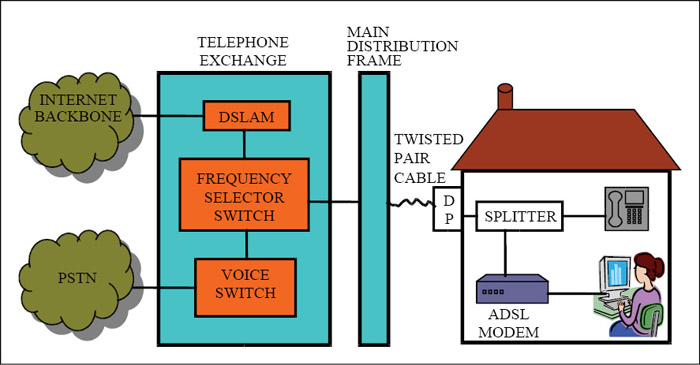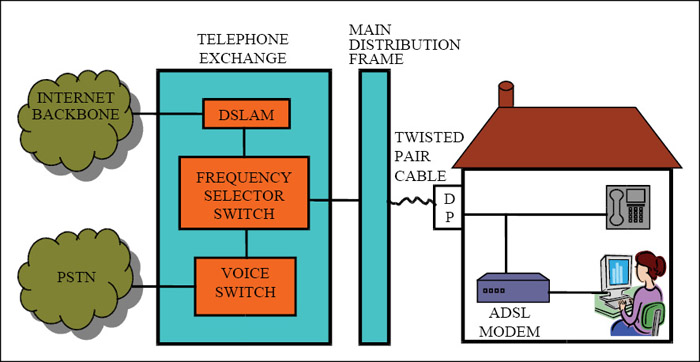Uni-DSL (UDSL) is a universal service technology that is capable of providing all DSL services from one line card or home gateway. The aggregate downstream and upstream speed provided by UDSL is at least 200Mbps.
Ethernet local loop is a next-generation DSL technology that incorporates the features of Ethernet and DSL. It is capable of delivering speeds up to 6Mbps over a distance of 6.5km on a moderate-quality copper line. Very-high-speed DSL (VDSL) is an asymmetric technology that is capable of delivering downstream rates of 13Mbps to 52Mbps and upstream rates of 1.5Mbps to 2.3Mbps over a single copper pair line. The distance covered is from 300 metres to 1.4 kilometres from the telephone exchange.
Gigabit DSL (GDSL) technology is based on binder multiple-input and multiple-output (MIMO) technology and is capable of delivering 1Gbps up to 300-metre range.
Currently, the primary focus in xDSL wire-line technology is the development and deployment of ADSL technologies and architectures.
Asymmetric digital subscriber line (ADSL)
The Internet is used largely for downloading files, HTML and graphical content. Processes like uploading files or other content to servers are limited to very few users. Hence, the bandwidth required for downstream data is more than upstream data bandwidth requirement.
Further, on the technical side, it was realised that it was possible to transmit data more quickly from an exchange to a user, but that, when the user sent information to the exchange, it was more sensitive to noise caused by electromagnetic disturbances (nearer to the exchange, greater the concentration of cables, generating more cross-talk). Thus, the upload signal is weakest at the noisiest part of the local loop, while the download signal is strongest at the noisiest part of the local loop.


It therefore makes technical sense to have the digital subscriber line access multiplexer (DSLAM) transmit at a higher bit-rate than the modem on the customer end. So, the idea was to use an asymmetric system, imposing a lower speed from the subscriber to the exchange. This idea was incorporated by the employees of Bellcore (now Telcordia Technologies), who developed ADSL in 1988 by placing wide-band digital signals above existing voice signal on conventional twisted pair cables.
This DSL based technology enables transmission and reception of data at speeds higher than legacy copper media. There are two competing and incompatible standards for modulating the ADSL signal, known as discrete multi-tone (DMT) and carrierless amplitude phase (CAP).







